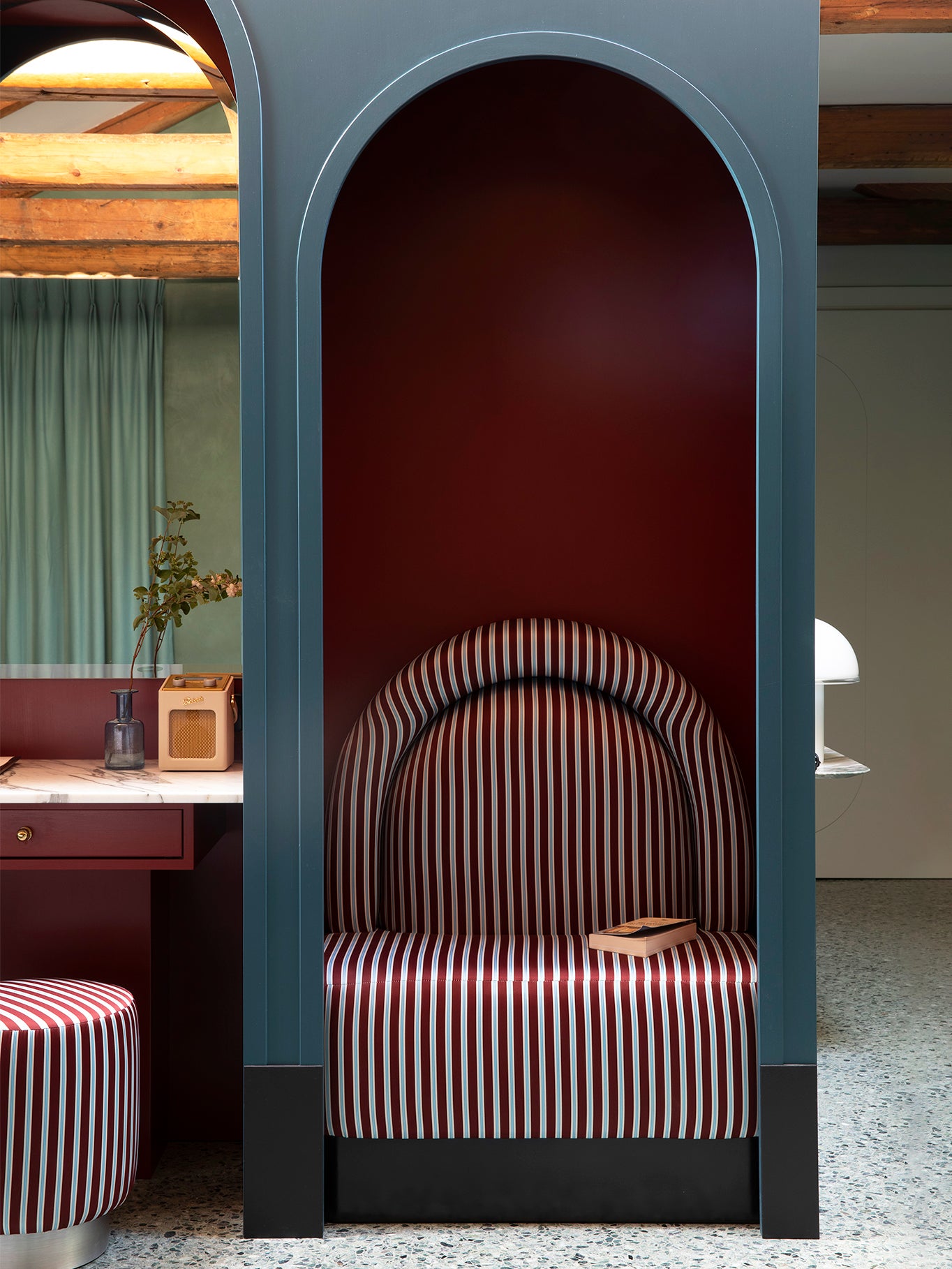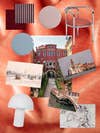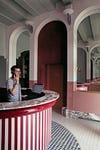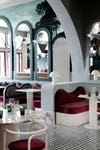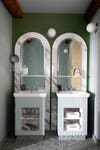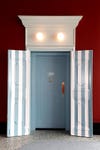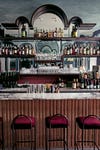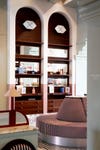This Splashy Venice Hotel Was Inspired by the City’s Canals
Waves, stripes, and sunset hues for the win.
Updated Oct 12, 2018 5:23 PM
We may earn revenue from the products available on this page and participate in affiliate programs.
Few places in the world have captured the attention of travelers and artists quite like Venice. Roman and Renaissance buildings stand on tiny islets joined by bridges; turquoise waterways glisten under the sunshine as gondolas glide past; birds soar through clear blue skies. It’s no wonder the city attracts more than 20 million visitors a year.
But far away from popular attractions, on a quiet canal in Venice’s Dorsoduro quarter, Il Palazzo Experimental will open this month, on the heels of the Experimental Group’s recent Menorca and Verbier properties. With surroundings so rich and full of history, it’s unsurprising that French interior designer Dorothée Meilichzon’s main source of inspiration for the 32-room hotel was the Italian metropolis itself.
“We did a ton of research on Italian design, Venetian architecture, and local techniques,” says Meilichzon, who looked to such architects as Andrea Palladio and Carlo Scarpa to guide her vision. “We wanted to add a bit of modernity to Venice, while using the local savoir faire and materials.”
The building, which was once the private home of Swiss-Italian businessman Giovanni Stucky and headquarters of the ferry company Adriatica Navigazioni, had sat empty for a decade. Luckily, the Venetian Gothic architecture’s rounded and pointed arches were intact, so the designer ran with that theme, adding rounded doorways and details on headboards, above bathroom vanity mirrors, and in the main dining room.
The choice of colors found throughout the hotel was no accident, either. Variations of greens and blues (in shades from dark to light) were inspired by the Venetian Lagoon, which evolves throughout the seasons and even throughout the day. A secondary palette of yellows, pinks, oranges, and bordeaux tones represent the dramatic hues found on the facades of buildings that populate Venice. On the walls, Marmorino Venetian plaster (a kind of lime made out of color pigments and marble powders) is applied in shades of dusty rose and steel, creating both texture and a moody atmosphere.
In the Ristorante Adriatica, wavy banquettes are a nod to the soft canal movements, while their striped fabric references traditional gondolier uniforms, “a little wink to the water of Venezia,” says Meilichzon. On other seats, she used a lit bateau (bed boat) shape, typical of her French heritage. “It’s perfect for a city built on water.”
A panoramic wallpaper depicting an imaginary Italian landscape offsets the more modern applications of Breccia Capraia marble (used as baseboards and plinths) and black-and-white geometric terrazzo floors from Scarpa in the space. “It’s always a question of balance,” explains Meilichzon.
This equilibrium is also at the heart of the fantastical dreamscape, which transports visitors throughout a visual history of Venice and Italian design, from Andrea Palladio and the Memphis Group to Gae Aulenti and Luciano Vistosi. The food at the coastal Italian restaurant will surely be a feast for the taste buds, but the rest of the hotel is one for the eyes.
Discover more cool new hotels we love: We’re Living for the Painted Doorways in Menorca’s Spirited New Hotel 3 Zesty Color Combos We’re Stealing From an Ultra-Cool Roman Hotel The 3 Color Palettes That Made This Historic Tuscan Hotel Feel New Again
